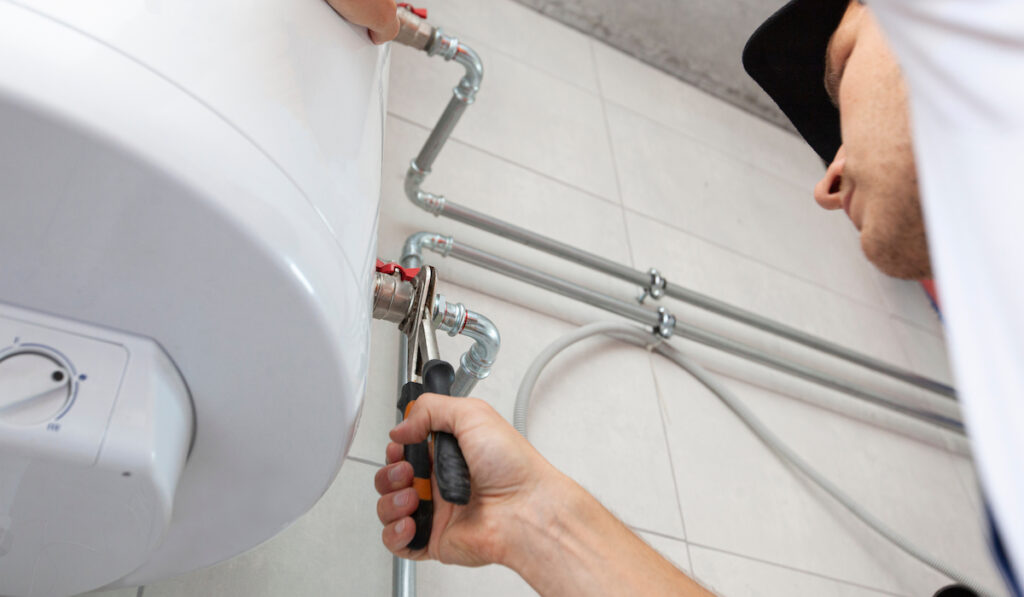Essential Maintenance Tips for Your Home's Hot Water System
Essential Maintenance Tips for Your Home's Hot Water System
Blog Article
Just how do you feel in regards to How to Maintain Your Water Heater & Prolong its Life?

Warm water is vital for everyday convenience, whether it's for a refreshing shower or washing dishes. To ensure your hot water system runs effectively and lasts longer, routine maintenance is essential. This post offers useful ideas and insights on just how to maintain your home's warm water system to stay clear of disruptions and expensive repairs.
Intro
Maintaining your home's hot water system could seem daunting, yet with a few easy steps, you can ensure it runs smoothly for many years to come. This overview covers everything from comprehending your warm water system to do it yourself maintenance tips and understanding when to call in specialist help.
Significance of Preserving Your Warm Water System
Regular upkeep not just prolongs the life-span of your hot water system however additionally ensures it runs efficiently. Overlooking upkeep can cause decreased effectiveness, higher energy bills, and even premature failure of the system.
Signs Your Warm Water System Needs Maintenance
Understanding when your warm water system needs interest can protect against major problems. Look out for indications such as irregular water temperature, unusual noises from the heating system, or rusty water.
Comprehending Your Warm Water System
Prior to diving right into maintenance tasks, it's handy to comprehend the standard parts of your hot water system. Normally, this consists of the hot water heater itself, pipelines, anode poles, and temperature controls.
Regular Monthly Maintenance Tasks
Regular regular monthly checks can assist capture small issues before they intensify.
Purging the Hot Water Heater
Purging your hot water heater gets rid of sediment build-up, boosting performance and lengthening its life.
Monitoring and Replacing Anode Rods
Anode rods stop rust inside the storage tank. Checking and changing them when broken is essential.
Examining and Changing Temperature Settings
Readjusting the temperature settings ensures optimal performance and safety.
Do It Yourself Tips for Upkeep
You can perform several maintenance tasks on your own to keep your hot water system in top problem.
Checking for Leaks
Frequently check pipes and connections for leakages, as these can lead to water damages and higher expenses.
Evaluating Stress Alleviation Valves
Checking the pressure safety valve ensures it functions properly and stops extreme pressure buildup.
Insulating Pipelines
Insulating hot water pipelines lowers warmth loss and can conserve energy.
When to Call a Professional
While DIY maintenance is beneficial, some problems need expert proficiency.
Complicated Issues Needing Professional Assistance
Examples consist of major leaks, electric issues, or if your water heater is continually underperforming.
Regular Professional Maintenance Benefits
Specialist maintenance can consist of complete assessments, tune-ups, and guaranteeing conformity with security standards.
Verdict
Regular upkeep of your home's warm water system is crucial for effectiveness, longevity, and expense savings. By complying with these tips and recognizing when to seek specialist help, you can make certain a trustworthy supply of hot water without unforeseen disruptions.
Water Heater Maintenance Tips
Test the TPR Valve
Shut off the power and the cold-water supply valve. Place a bucket under the pipe connected to the temperature-pressure-release (TPR) valve on the top or side of the tank. (This valve opens if the tank pressure gets too high.) Lift the valve’s tab to let some water out, then let go. If water keeps flowing, drain the tank partway, unscrew the old valve with a pipe wrench, and install a new one. Check the Anode Rod
Put a hose to the tank’s drain cock and let out a few gallons of water. Now fit a 1 1/16-inch socket onto the rod’s hex head on top of the heater (or under its top plate) and unscrew the rod. If it’s less than ½ inch thick or coated with calcium, buy a new one, wrap its threads with Teflon tape, put it back in the tank, and tighten securely. Use this segmented rod if headroom above the tank is limited. Drain the Tank and Wash Out Sediment
Drain the remaining water in the tank into the bucket, then stir up the sediment on the tank’s bottom by briefly opening the cold-water supply valve. Drain and repeat until clean water comes out of the hose. Close the drain cock, refill the tank, and turn its power back on. Adjust the Temperature
Find the temperature dial on the side of the tank and unscrew its cover. Adjust the dial to 120 degrees using a flathead screwdriver. For every 10 degrees the temperature is lowered, you can expect to save up to 5 percent in energy costs. Turn the water heater off or the thermostat down to its lowest setting if you plan to be away from home for more than three days. Insulate the Pipes
Buy some self-sticking 3/8-inch-thick foam pipe insulation that matches the pipes’ diameter. Slide the foam over the hot-and cold-water pipes as far as you can reach. Insulating the cold-water pipe prevents condensation in summer. Peel the tape and squeeze the insulation closed. If the pipe is 6 inches or less from the flue, cover it with 1-inch-thick unfaced fiberglass pipe wrap. https://www.thisoldhouse.com/plumbing/21016402/how-to-maintain-a-water-heater

I found that write up on How to Maintain Your Water Heater & Prolong its Life when perusing the search engines. Kindly take a moment to distribute this article if you enjoyed reading it. I value reading our article about How to Maintain Your Water Heater & Prolong its Life.
Book Your Service Report this page